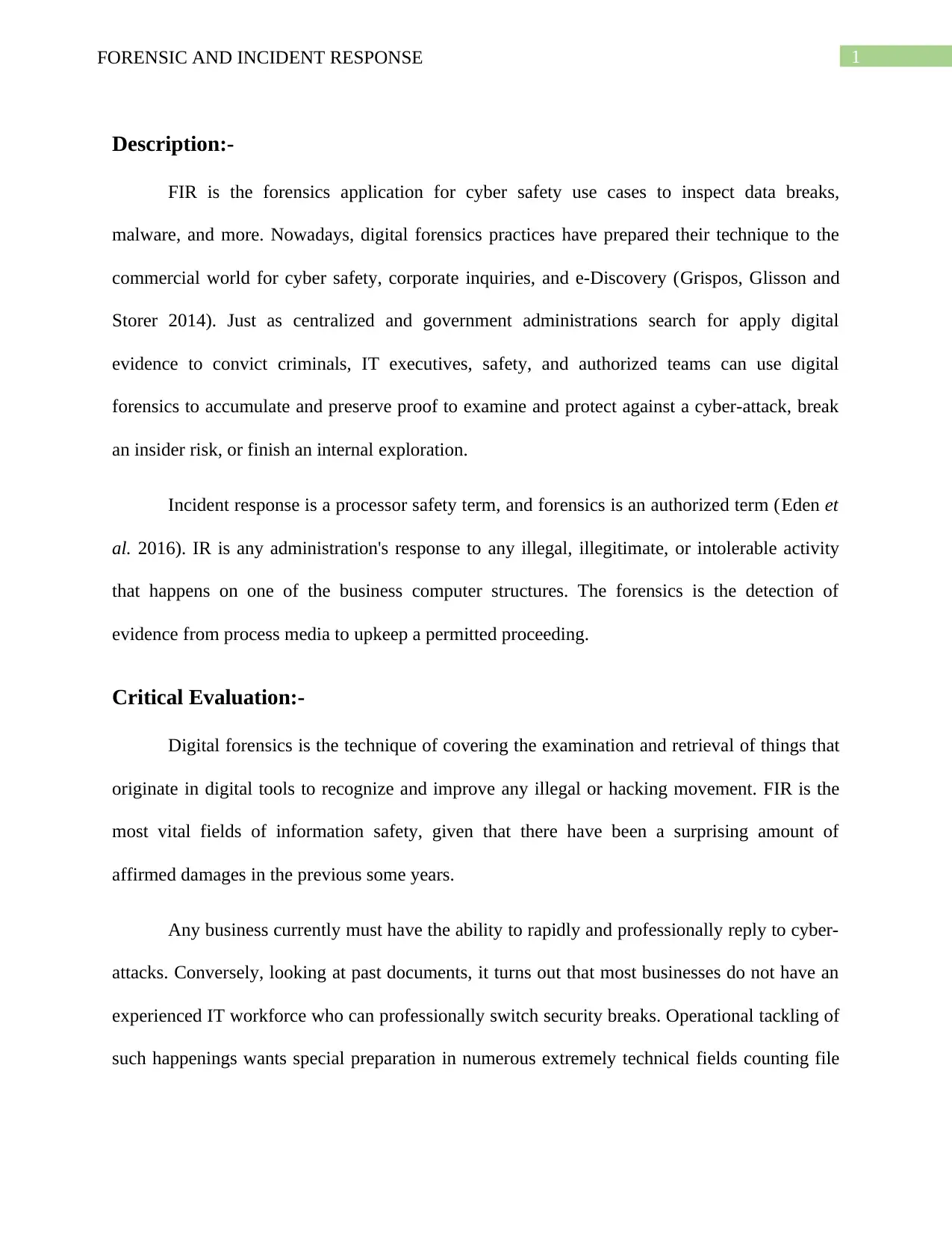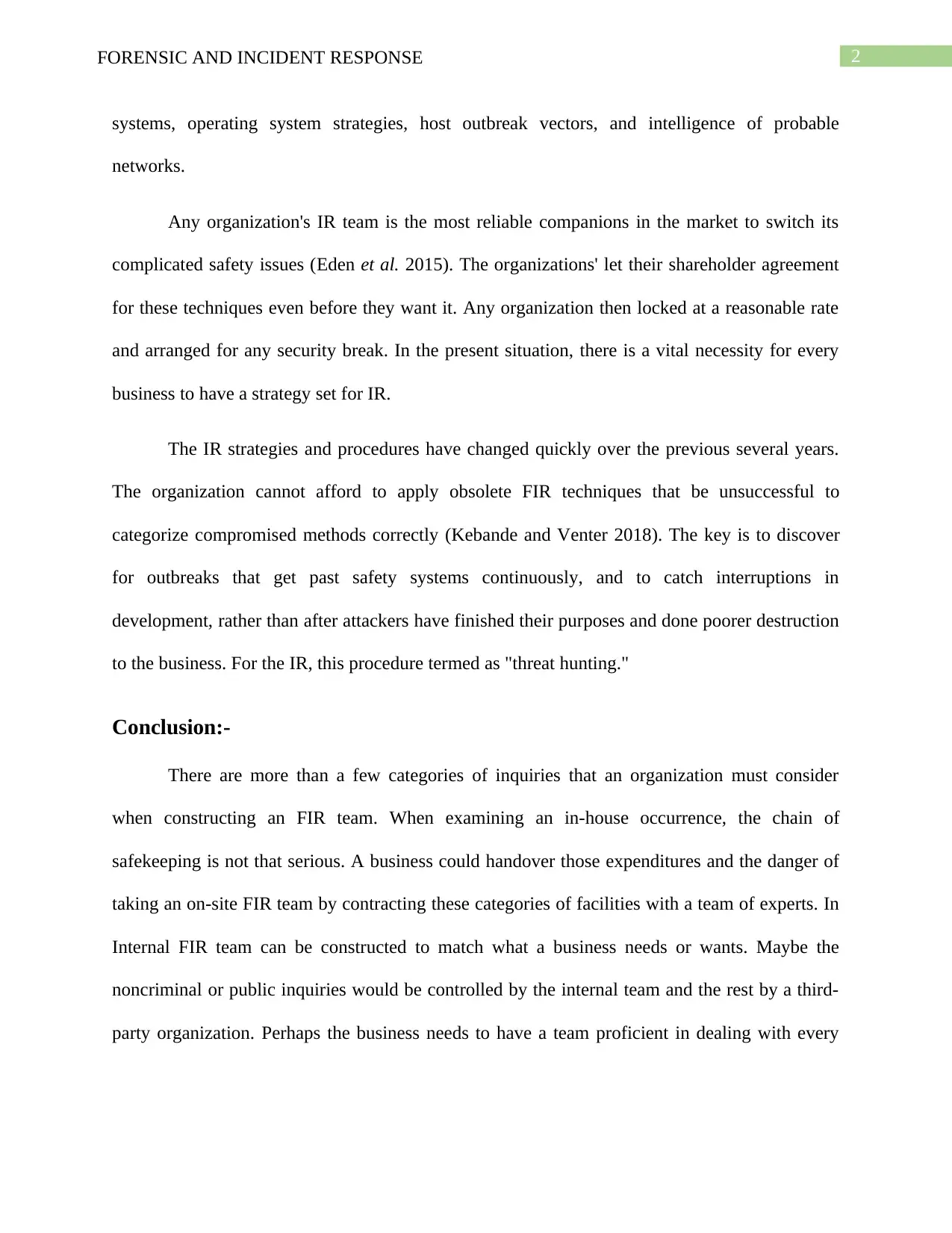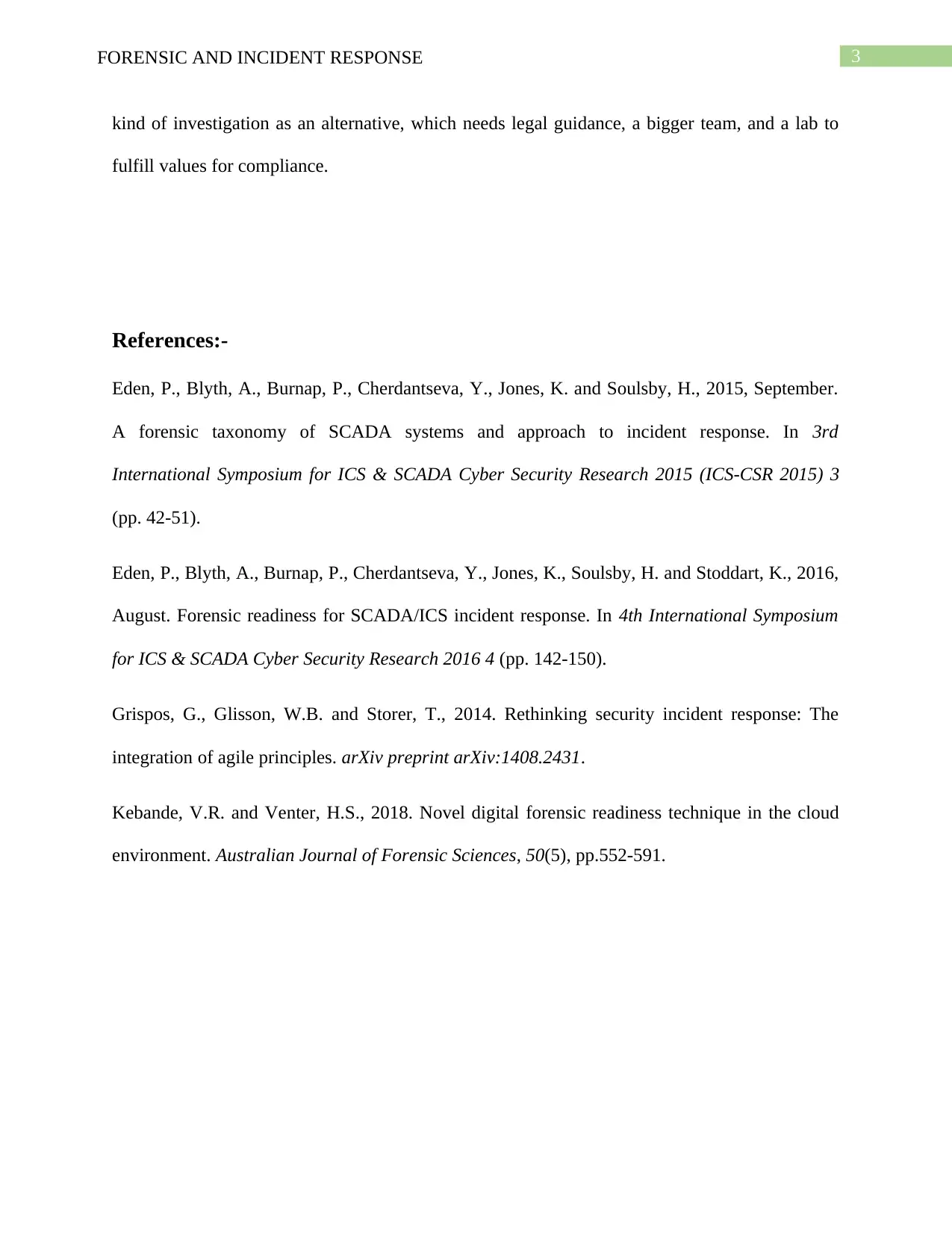Forensic and Incident Response: Cybersecurity Report Analysis
VerifiedAdded on 2022/08/29
|4
|837
|21
Report
AI Summary
This report delves into Forensic and Incident Response (FIR) within the context of cybersecurity. It highlights the application of digital forensics in investigating data breaches, malware, and cyber-attacks. The report emphasizes the importance of incident response as a critical process for organizations to address illegal or intolerable activities on their computer systems. It discusses the evolution of FIR techniques, the need for proactive threat hunting, and the critical evaluation of digital forensics in identifying and mitigating cyber threats. The report also examines the considerations for building an effective FIR team, including the choice between in-house and third-party services. The references provide insights into the integration of agile principles in incident response, forensic readiness for SCADA/ICS systems, and novel digital forensic techniques in cloud environments.
1 out of 4







![[object Object]](/_next/static/media/star-bottom.7253800d.svg)